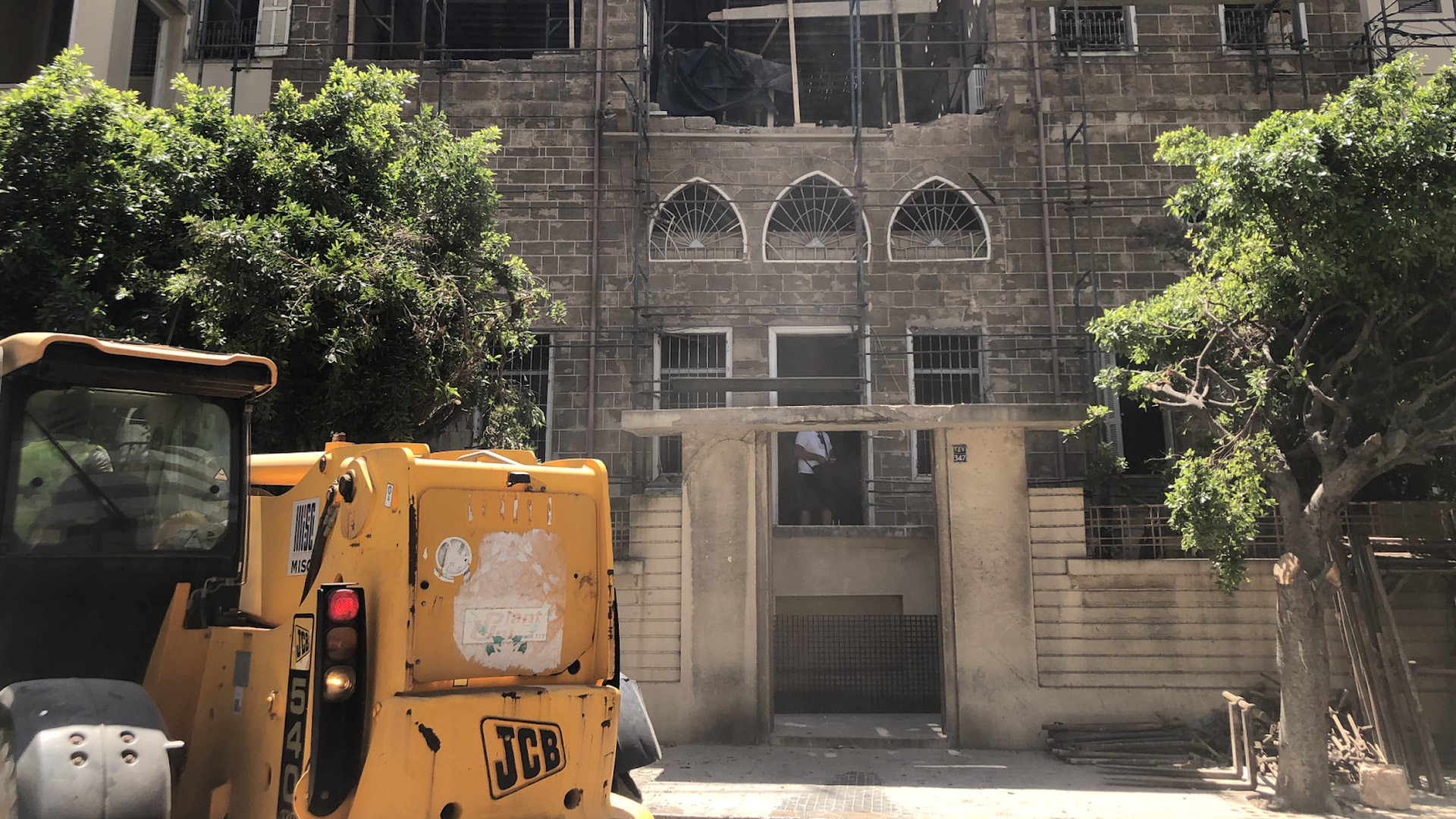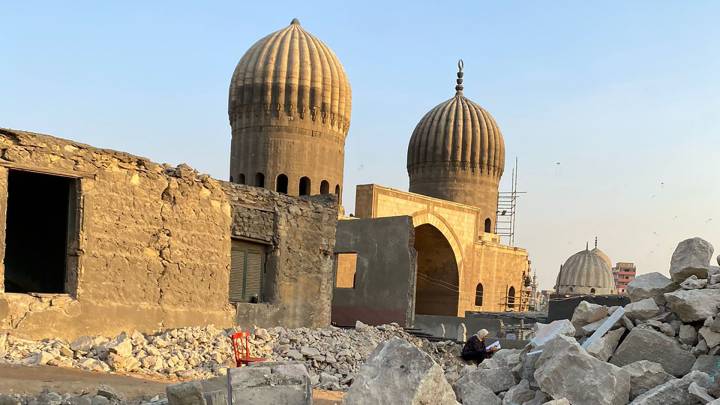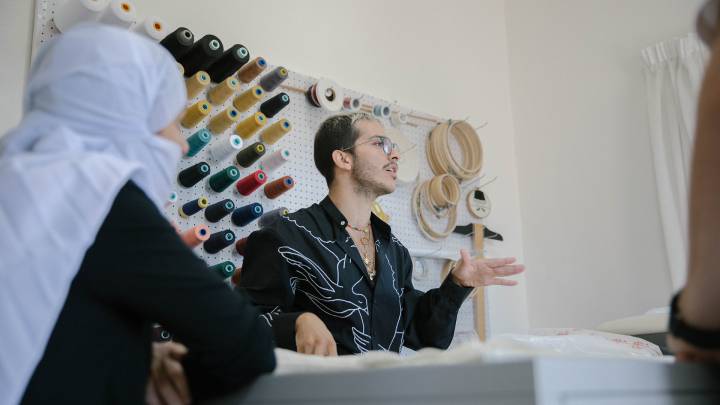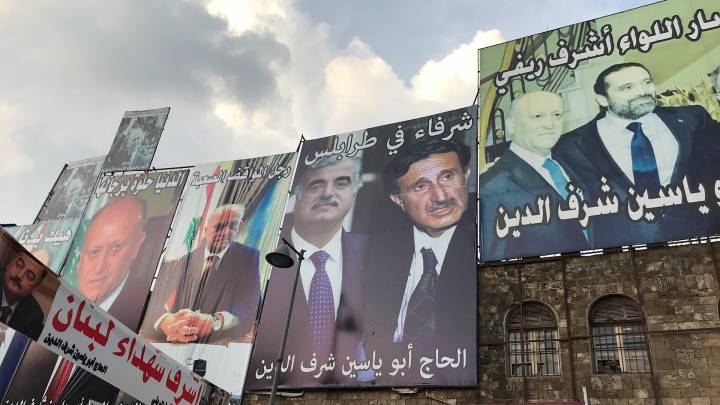The 4 August explosion rocked the city’s historical neighbourhoods of Mar Mikhael and Gemmayze so severely, it has left experts and inhabitants wondering if their most precious buildings can be saved at all.
Not much remains of the building, at the end of Rue Gouraud in Beirut’s Gemmayze district, that housed Bechara Gholam’s home office. If one takes a closer look, it appears that part of the ground floor remains intact, but the two storeys above have completely collapsed. Gholam’s father, who lived to the age of 107, was born in this house.
A month after the Beirut explosion on 4 August volunteers are still cleaning up the debris around the Gholam family building. Architects are still assessing the extent of the damage in Mar Mikhael and Gemmayze, two of the cities most affected neighbourhoods. Meanwhile, residents mourn the destruction of their quarters, where the industrial and the antique blended with the bohemian. Concern is growing among them that yet another part of the city’s heritage has been stolen, not to be returned.
Assessing the damage
Since the construction of Gholam’s building, some 160 years ago, it has witnessed two world wars, the civil war, and the recent economic collapse. The blast simply tore apart a house that was older than the state of Lebanon itself. “My brother broke his arm amid the destruction, and his wife and kids suffered minor injuries,” Gholam tells zenith. The building consisted of four apartments and was once home to 15 people.
Gholam’s building was not the only causality. Its neighbour was also reduced to rubble, along with a further six buildings in Armenia, Gouraud and Pasteur streets, all of which predated Lebanon’s foundation to a time when Beirut was under Ottoman rule. They bore the characteristics of the finest architecture of the period: sandstone exteriors, triple-arch facades, and red-tiled roofs. This particular design is emblematic of a traditional building style that is fast disappearing in Beirut’s neighbourhoods. A few hundred metres from the remnants of Gholam’s building, a house remains standing, but the roof is gone and the balcony that extends along the three-arch facade has crumbled to the ground.
“We’ve been trying to preserve these buildings for years,” architect Fadlallah Dagher tells zenith. In coordination with the Directorate General of Antiquities, this expert in Lebanon’s architectural heritage has been leading a coalition of architects and NGOs assessing the damage left behind by the blast. On 28 August, the coalition launched the Beirut Heritage Initiative which defines itself as “an independent and inclusive group striving to restore Beirut’s architectural and cultural heritage.”
Inspecting the damage will be accompanied with immediate safeguarding measures. To aid these efforts buildings affected by the blast have been divided into those hardest hit – the red zone – and those which were spared the full impact of the blast – the blue zone. “So far, we’ve inspected 360 historical buildings in the “red zone” of Mar Mikhael and Gemmayze, as well as 250 buildings in the “blue zone” a few blocks behind.” Dagher emphasises, however, that dangers remain: “50 more buildings are at risk of collapse, with serious damage to their structures. Altogether 300 others are damaged but bear no structural risks.
Many of Lebanon’s historical buildings are not well-maintained, but this cannot be said of the houses in the relatively affluent neighbourhoods of Mar Mikhael and Gemmayze. The force of the blast was simply too strong. “We’re working on supporting buildings at risk of collapse using temporary salvage structures and we cover the roofs before winter comes,” Dagher says, “We’re prioritising building clusters that can preserve the fabric of the area. We want to save whole neighbourhoods, not only buildings.”
Fragile splendour
It is no coincidence that Beirut’s splendid architecture sprung up around the port in neighbourhoods such as Mar Mikhael and Gemmayze, as architect and historic preservationist Mayssa Jallad explains: “Many buildings were built in the early 20th century, inspired by the Venetian style locandas (hotels) around the port, with the triple arches.” The triple arch is undeniably beautiful, but, as it is essentially a void in the façade, it is the building’s weakest structural point – not built to withstand the fallout of an ammonium nitrate explosion.
What Dagher describes as the “tsunami of air” snapped the beams hoisting up the structure, causing it to crumble atop the balconies. Roofs also caved in under pressure of a blast which registered on seismographs as a 3.3-magnitude earthquake. Typically, their red tiles are laid on timber or steel rafters, which, even in buildings with more superficial damage, inspections revealed to be cracked where they meet the walls.
The twelve-centimetre-thick blocks are usually held in place by a composition of sand, lime, and clay. Lacking concrete or metal beams these buildings were not strong enough to resist the “tsunami” shaking their walls back and forth. When they shook, as the underground remained rigid, many walls cracked or collapsed. “The war was bad for these buildings,” says architect Antoine Atallah, an activist involved in preservation efforts: “But the war didn’t damage 300 buildings at once.”
“Heritage is people”
“Heritage can’t exist without the people,” says Jallad: “We’ve already lost part of the area’s population to gentrification when the pubs opened. To see a second wave of inhabitants leave now after the explosion is heart-breaking.”
In the 2010s, many residents left Gemmayze fleeing its noise and expense, while Mar Mikhael was starting to become a hub for bars and coffee shops. The garages and workshops that remain their hits at the neighbourhood’s industrial past on the outskirts of the port.
Among the most prominent signs of gentrification was the demolition of an abandoned beer brewery to allow for the construction of a spaceship-like modernist tower designed by star architect Bernard Khoury, which houses several luxurious apartments. Khoury is not the only famous architect to have left their mark in the area. Jean-Marc Bonfils, who was killed in the recent blast, created a stone-clad apartment bloc with a traditional timber frame and a vertical garden, with room for a gallery on the ground floor.
While newer buildings proved more resilient to the inferno, older ones in a sorry state of disrepair are vulnerable to real-estate developers who, according to rumours on the streets, have already sent out their scouts to assess business opportunities.
After the blast, Mar Mikhael resident Fady Farah was visited by his landlord and a police officer, who had a document claiming the building was unsafe: “The landlord is always looking for an excuse to expel us because we pay low rent. He said the building will collapse, but an engineer hired by us had already inspected it and told us it was safe.” Farah’s family refused to leave. His story is similar to many other accounts coming out of Mar Mikhael and Gemmayze.
Fears of a destructive reconstruction
Many residents express worries about what they call “Solidere 2”. After the civil war ended in 1992, then Prime Minister Rafik Hariri set his sights on the reconstruction of downtown Beirut. He established the public-private development company Solidere, and, equipped with a government mandate, the company set about rebuilding the city centre, aggressively buying up houses and plots of land, and evicting old tenants and owners. While Solidere did reconstruct some old buildings, others were substituted with unfitting modernist structures such as the giant mall. Many activists and local residents have accused Solidere of making the heart of the capital overly commercial and completely unaffordable for normal people to live in.
Antoine Lawandos, whose Mar Mikhael garage sustained thousands of dollars of damage, fears that history will repeat itself: “It might happen again, just like Solidere rebuilt a city atop the rubble. We forget too quickly.” Yves Khoury, a partner at Vivienne’s bar and the restaurant Happy Prince, also sees the parallels with the past: “We should’ve left everything on the ground and let the state come clean it up. This situation now seems just like ‘Solidere’. They erased our collective memory of war and now they want to erase Mar Mikhael and our heritage.”
Reconstruction takes time and money, neither of which Lebanon has. The state is in disarray. Basic foodstuffs and medicines are absent from the shelves. Strict capital controls, brought in last autumn to address rampant hyperinflation, has made buying the imported materials necessary for the reconstruction all but impossible. To make matters worse, many insurance companies are refusing to pay out for damages until the state issues an official report detailing the cause of the blast, leaving many reliant on international donations and the help of volunteers.
Dagher himself believes in people power: “When the state is a failed one, civil society should take up the task of reconstruction.” He fears, however, that members of the political establishment will seek to profit from their citizens’ misfortunes: We’re expecting sticks in the wheels, of course.”
Despite Dagher’s caveated optimism, the reality on the ground remains bleak. Since his building was destroyed, Bechara Gholam has moved, with his daughter’s help, to an empty gallery a few blocks down the road. Gholam, who has been a mekhtar – an elected local official – for nearly 40 years, cannot afford to shut up shop now as he is inundated with hundreds of citizens’ request to fill out paperwork. He tells zenith that he was promised that his building will be rebuild. He cannot recall which entity made that promise and is less sure whether it will actually be fulfilled. Meanwhile, his relatives in Los Angeles have started a GoFundMe page for the reconstruction of Gholam's apartment, which has already amassed $10,136, the target sum is $25,000.
“What can we do?” Gholam says: “My family has lived in this house for so many years. We have to rebuild. There’s no other option.”
Jonathan Dagher is a journalist and producer at the Lebanese independent online media platform Megaphone News. In summer 2019 he participated in RSF Germany’s Berlin Scholarship Programme.
The content published on the Lebanon Chronicles channel is supported by the Konrad-Adenauer-Stiftung (KAS). The views expressed in these articles are those of the respective authors and do not necessarily reflect those of the KAS.





